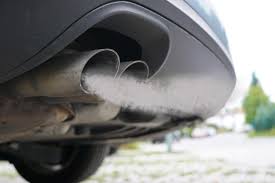1NZFE VS 4EFTE
Introduction
Toyota has produced a wide range of engines over the years, each tailored for specific applications. Two notable examples are the 1NZ-FE and the 4E-FTE. While both come from Toyota’s smaller engine families, they cater to different audiences and engineering philosophies. The 1NZ-FE is a naturally aspirated 1.5-liter inline-four, designed primarily for fuel efficiency and everyday reliability. In contrast, the 4E-FTE is a 1.3-liter turbocharged inline-four aimed at performance in compact, sporty vehicles. Comparing these two engines reveals how Toyota balances practicality and performance in its lineup.
Design and Specifications
The 1NZ-FE belongs to Toyota’s NZ family, introduced in the late 1990s. It features an aluminum alloy block and head, DOHC with VVT-i (Variable Valve Timing with intelligence), and produces around 109 horsepower and 141 Nm of torque. It is most commonly found in models like the Toyota Vios, Yaris, and Echo. On the other hand, the 4E-FTE is part of the E-series, produced in the 1990s for sportier cars such as the Toyota Starlet GT Turbo and Glanza V. This engine features a cast-iron block for strength, DOHC 16-valve configuration, and a factory turbocharger delivering about 133 horsepower and 157 Nm of torque, impressive figures for its size and era.
Performance Characteristics
When it comes to performance, the 4E-FTE clearly takes the lead in acceleration and responsiveness. The turbocharger boosts low-end torque and high-RPM power, making it ideal for spirited driving or motorsport applications. In contrast, the 1NZ-FE is tuned for linear, smooth power delivery with better fuel economy. It lacks the sudden surge of turbocharged torque but makes up for it with predictable handling and less stress on engine components over time. The 1NZ-FE’s lighter aluminum block also helps with vehicle weight balance, whereas the 4E-FTE’s heavier iron block contributes to its durability under boost.
Reliability and Maintenance
Reliability is a strong point for both engines, but with different caveats. The 1NZ-FE is known for exceptional longevity when maintained properly, often exceeding 300,000 km without major issues. Its naturally aspirated setup puts less strain on internals and is easier to maintain. The 4E-FTE, while robust, demands more attentive upkeep due to the turbo system and higher internal pressures. Turbo wear, intercooler efficiency, and proper oiling are critical for keeping it in top shape. Enthusiasts often modify the 4E-FTE for more power, but this can compromise reliability if not done carefully.
Conclusion
In summary, the choice between the 1NZ-FE and the 4E-FTE comes down to priorities. The 1NZ-FE excels in daily driving, fuel economy, and long-term dependability, making it a practical option for commuters and economy-focused vehicles. The 4E-FTE delivers excitement and tuning potential for drivers seeking a compact turbocharged experience, but with a greater need for maintenance diligence. Together, these engines showcase Toyota’s ability to design powerplants that serve vastly different purposes, one as a workhorse for everyday use, the other as a small but mighty performance machine.




Comments
Post a Comment